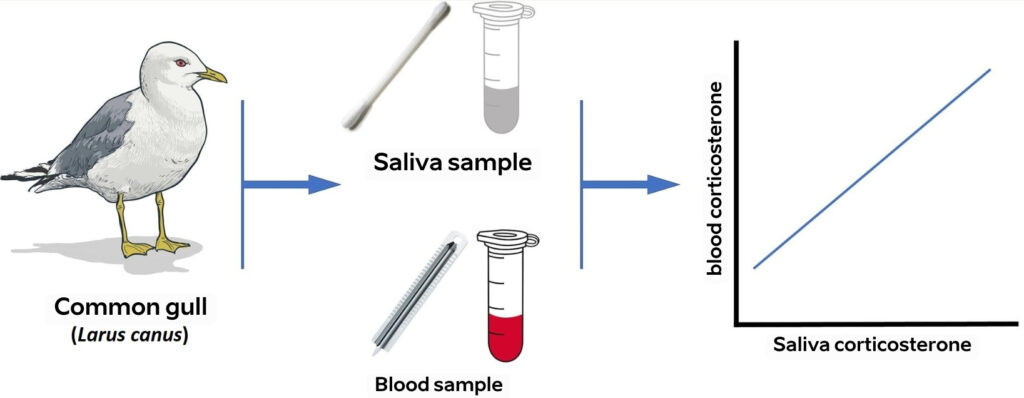In nature, a variety of disturbances are common, such as weather, changes in land use and human presence. An animal’s stress level influences their reproduction and is important information for making decisions about the population’s status or the need for conservation.
Stress can be measured by the levels of hormones circulating in the blood. Higher levels of stress cause the blood to release cortisol or corticosterone, which aids in regulating metabolism. These hormones stay in the bloodstream for varying amounts of time, depending on how long the disturbance lasts. Prolonged bloodstream retention can cause abnormal metabolism.
Usually, stress in animals is gauged from blood, but more animal-friendly techniques nowadays allow us to measure stress markers from faeces, hair/feathers or saliva. So far, stress levels in domesticated animals or animals kept in captivity have been measured through their saliva. Measuring stress through saliva allows us to determine the condition of the specimen at the time of measurement as well as the baseline level of stress. Feathers and hair, on the other hand, can be used to measure stress during feather growth.

The method was first tested on birds by researchers from the University of Tartu on common gulls living on Kakrarahu Island, when Jeffrey Carbillet, a French scientist from the Institute of Ecology and Earth Sciences who had previously studied roe deer and measured stress hormones in their saliva, asked if the same method would work for birds.
In the spring of 2022, blood and saliva samples were taken from 24 common gulls on Kakrarahu Island. Although corticosterone levels in saliva were significantly lower – 35.7% of levels in blood plasma – there was a strong correlation between the two measurements. In saliva, there is only freely circulating corticosterone, whereas in blood, a large portion of the hormone is bound to proteins. This means that the saliva sample must be large enough to detect corticosterone. The advantage of measuring saliva is that it detects the amount of biologically active free hormone.
The results were promising. The indicators measured from saliva and blood correlated, implying that it is possible to measure stress from wild bird saliva. While hormone levels in the blood rise quickly within two to three minutes of capture, hormone levels in saliva remain stable for 20-30 minutes. As a result, measuring stress from saliva allows for a more accurate assessment of both the animal’s initial stress level and stress caused by disturbances compared to measuring from blood samples.
Measuring the stress level of an individual bird from its saliva could make understanding bird biology and ecology as well as decision-making in conservation efforts easier. However, saliva sampling has limitations. The common gull is a large bird that can produce enough saliva, but it is unknown whether the method would work for smaller birds. Furthermore, it is critical to determine whether other hormones (such as testosterone, estradiol, progesterone, oxytocin and melatonin) can be measured in saliva.
This article was originally published on Linnuvaatleja blogi (The Birdwatcher blog). Written by Marko Mägi.
The scientific article behind this article can be found on ScienceDirect.
Read more from our webpage about birds HERE.
 Back
Back



